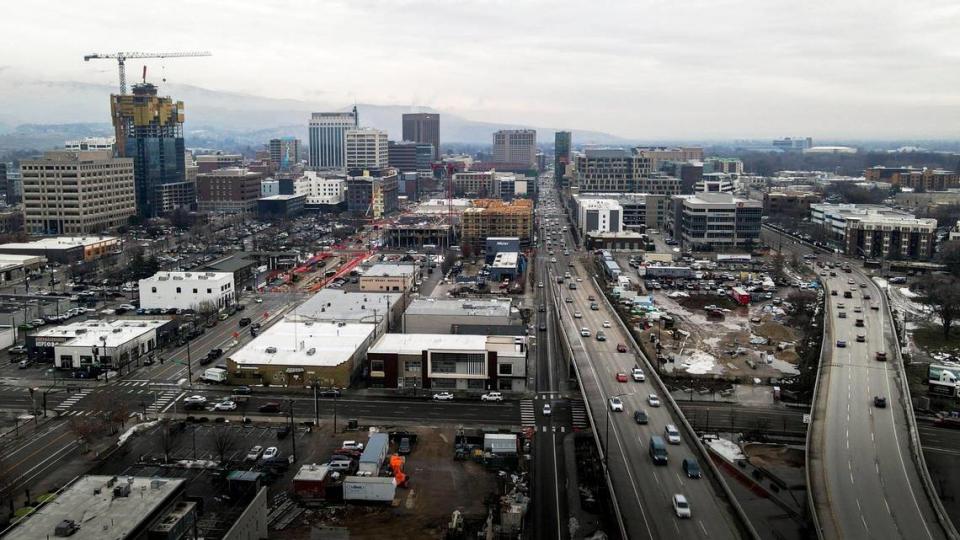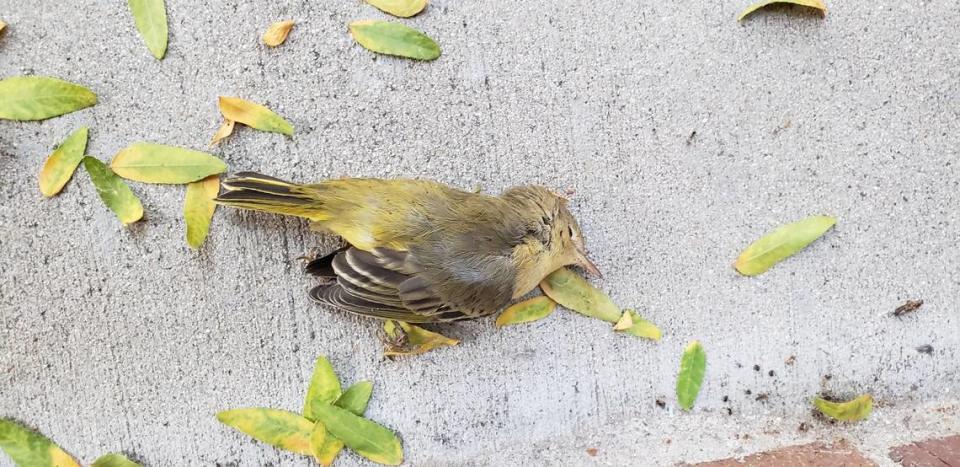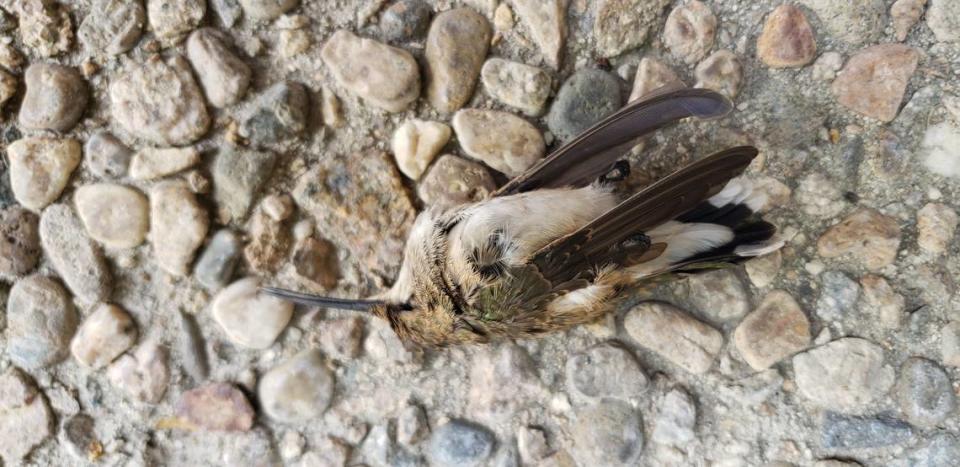Boise’s downtown skyline keeps getting taller. For birds, this may spell trouble.
Downtown Boise keeps getting taller: A 26-story apartment building here, a seven-story building there. For city residents, this can be a source of pride, a visual representation of the city’s growth.
But what’s the bird’s-eye view?
For birds, the rapid increase in high-rise buildings may pose a threat. Nearly one billion birds die nationally every year from collisions with glass windows, according to the U.S. Fish and Wildlife Service, and it’s an especially potent threat in cities with tall glass buildings.

There is little current local data on the rate of these collisions — and deaths — in the Boise area, experts say. But all indicators point to a problem, said Heidi Ware Carlisle, the education director at Boise State’s Intermountain Bird Observatory. These include an increase in glass buildings, many of which keep their lights on all night,
“We don’t have the hard survey data from Boise counting dead birds, but we have data from other cities saying this type of building, this type of lighting is a problem, and we have the same buildings and the same lighting,” she said. “The connection is pretty simple.”

The concern is on the city’s radar as one consideration among many amid rapid development and new construction. As the city rewrote its zoning code, which went into effect in December, the local chapter of the Audubon Society, called the Golden Eagle Audubon Society, worked with the city to incorporate bird safety considerations.
It took “a little pleading,” wrote Lisa Reed, the chapter’s president at the time, but the city now requires new commercial buildings to take preventative measures — like using non-reflective glass, opaque or translucent window film, or external screens — on at least 90% of windows. The new zoning code also restricts night lighting, which can help prevent migrating birds from becoming disoriented.
Most collisions occur in the early mornings, when birds are most actively looking for food, and when migrating birds stop to rest and refuel after flying all night, according to the American Bird Conservancy.
When birds encounter glass, they may think they can fly straight through it to something on the other side — a problem that can be resolved simply by closing the blinds — or they may see the reflection of trees or foliage nearby.

In cities with significant nighttime light, there can be a moth-to-a-flame effect, with city lights attracting migrating birds down toward buildings.
There have been intermittent studies in recent years to examine the scope of the problem in downtown Boise, including an 18-month study by Golden Eagle Audubon Society volunteers. Many of the projects were resource-constrained or faced logistical hurdles — like building maintenance crews removing dead birds before researchers could collect and document them.
But in recent months, Ware Carlisle has been overseeing a research project run by Boise State senior Mariah Hoel. Hoel designed and is conducting a survey of hot spots on campus, documenting the numbers of birds killed over several months. She and other student researchers walk around the perimeter of buildings 30 minutes before dawn, searching for dead birds.
Though Hoel’s study is focused on Boise State’s campus, Ware Carlisle noted that it’s one of relatively few studies focused — by definition — on Western bird species. Many larger-scale studies, she said, come out of East Coast schools. As Hoel homes in on which species of birds may be more susceptible to window collisions, she’ll be able to apply some of those East Coast findings to Boise’s environment.
“That’s one thing that could come out of her project, is helping us narrow down and understand, for the West, how do these results apply?” Ware Carlisle said. How can we “extrapolate from these larger projects?”
To learn more, watch the American Bird Conservancy’s “Stop the Thunk” video, or stop by the Golden Eagle Audubon Society’s table at Kuna’s Snake River Raptor Fest on Saturday, June 8, where members will be teaching visitors what they can do to prevent window collisions.
More downtown road construction? Parts of busy Boise street will be closed through summer
A big donor’s name will go on Boise’s Downtown YMCA as part of a 2½-block, $200M project
Sierra Club sued Boise over the city’s protest-megaphone ban. What a judge just decided
A new campus, science buildings and... a farm? What this Boise-area college is planning


